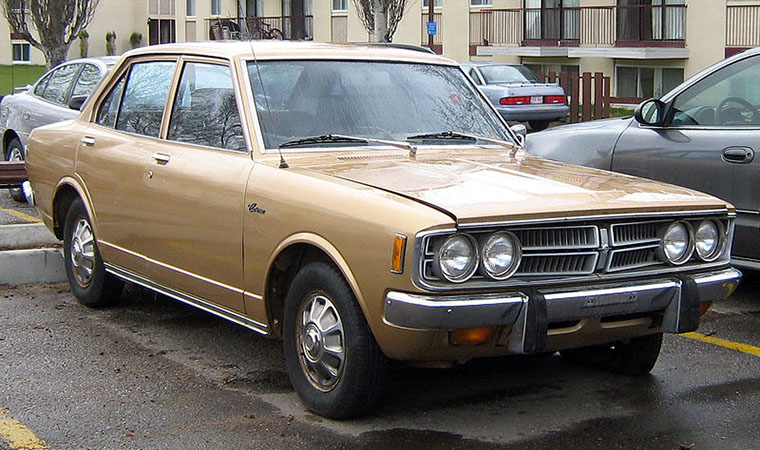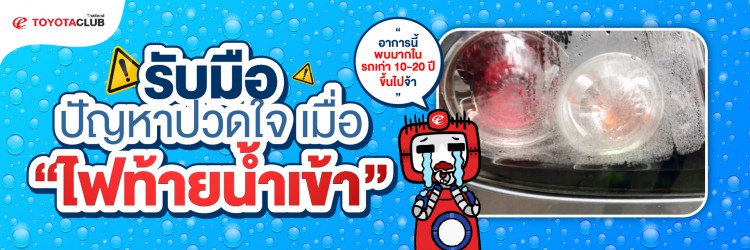

Toyota Corona part 1
The Toyota Corona (Japanese: トヨタ・コロナ) is an automobile manufactured by the Japanese automaker Toyota between 1957 and 2002. Traditionally, the competitor from Nissan was the Nissan Bluebird.[citation needed] The word Corona is Latin for "crown", a reference to an earlier vehicle Toyota offered called the Toyota Crown. It was exclusive to Toyopet Store dealership channels in Japan, while the larger Crown was available only at Toyota Store locations.
In many countries, the Corona was one of Toyota's first international exports, and was shortly joined by the smaller Toyota Corolla, providing buyers with a choice of a larger car, with similar operating expenses to the smaller Corolla. The Corona was Toyota's second sedan in their hierarchy of products, just below the Crown, until 1968 when the Corona name was used on a larger, all new platform called the Toyota Corona Mark II, which gave buyers more interior space while still offering dependable, affordable performance.
The Corona became successful in export markets and was marketed under a number of different nameplates worldwide—including those branded in much of Asia as Coronas marketed in European markets as Carinas. While the Corona is no longer in production, the Toyota "T" platform used to build it is still being used.
T10 series
The first generation Corona, introduced in May 1957, was designed with parts from the previous generation Crown and Master following a major restyle and enlargement of the Crown. Many of the body panels were cut down from the Master which had ceased production. Aside from the four-door sedan, the ST16/PT16 van versions were also available. Originally, the ST10/16 Corona was fitted with the old sidevalve "S" engine, with 33 PS (24 kW).[1] In April 1958 the Corona underwent a light facelift, with a new hood ornament and door handles. The tail light design of this generation is reminiscent of the 1949 Ford sedan.
The 997 cc (60.8 cu in) OHV P series engine replaced the old S in September 1959, and offered substantially more power with 45 PS (33 kW) at 5,000 rpm. The P-engined Corona sedan was capable of traveling at 105 km/h (65 mph). The car also underwent another facelift, including a mesh grille and a new rear seat which allowed seating for five rather than the previous four. As regulations regarding taxis at the time required engines no larger than 910 cc (56 cu in), dealers restricted the power for taxi vehicles. Due to the upgrade in dimensions of the Crown, Toyota needed to continue manufacturing a vehicle with similar size dimensions to the first Crown, primarily to be used for taxi usage. This vehicle saw the introduction of a monocoque chassis structure, and an independent front suspension using double wishbones. Due to the monocoque chassis, Toyota was able to produce a vehicle under 1,000 kg (2,200 lb).
T20, T30 series
This generation of the Corona was also known as the Tiara, when sold by Toyota Motor Corporation in the export. It was introduced at a critical time for the company in North America. Their first flagship car, the Toyopet Crown, was unsuccessful in the US market, and was withdrawn, leaving only a single vehicle, the Land Cruiser. At the time, there was little market for an off-road vehicle like the Land Cruiser. The front end styling of the P20 Corona is reminiscent of the 1955-1957 Ford Thunderbird, and shared its appearance with the entry-level offering, called the Toyota Publica.
The Tiara was supposed to sell alongside the Crown, as a smaller companion. Introduced in 1960, the car was powered by a 45 PS (33 kW) 1.0 L "P" series motor. With a three-speed manual transmission, top speed was a mere 110 km/h (68 mph).[2] In 1961, Toyota introduced a more powerful 1.5 litre "R" series motor, the same motor from the Crown; an even larger 1.9 litre engine was added in 1964. Fortunately for Toyota, the problems with the Crown were not seen on the Tiara as the lighter body (400 lb less than the Crown) made the R series engine more sufficient.[citation needed] The Tiara station wagon was seemingly aimed at women,[citation needed] with many of the original brochures featuring only women in a dinner dress as well as playing golf. Nevertheless, it sold better than the Crown and had a lot less mechanical problems.[citation needed] The Tiara ended up being the only sedan sold by Toyota in the USA until the reworked second-generation Crown appeared. By that time, the Tiara had been redesigned and given the Corona label from the Japanese domestic market. A total of only 318 of these vehicles were sold in the US.
Two concept cars were shown at the 1963 Tokyo Motor Show - the Corona 1500S Convertible and the Corona 1900S Sporty Sedan. The Corona Sports Coupe was a concept car shown at the 1963 Tokyo Motor Show - it shared little with the Corona except the suspension and the name. Load carrying abilities of the newly introduced Corona pickup (which was technically a coupé utility were shared with the heavier capacity Toyota Stout.
T40, T50 series
The third generation was introduced September 1964,[4] and was available in sedan, two-door hardtop, three-door van, five-door station wagon (also as a van), two pickup variants and a five-door hatchback. The Italian designer Battista Farina assisted in the appearance of the new Corona.[citation needed] The 40-43 series were reserved for sedans, while commercial vehicles (and wagons) were in the 46 and 47 series. Hardtops received 50-55 series model codes, while 56 was reserved for the five-door hatchback.[8]
A public demonstration of the new Corona's performance was done on the Meishin Expressway, where the new model was tested to 100,000 kilometres (62,137.1 mi), and was able to sustain speeds of 140 km/h (87 mph). The Corona was released one year after the debut of the Corona's traditional competitor, the Nissan Bluebird. Toyota introduced a smaller vehicle to address the market that needed a more fuel efficient vehicle, called the Toyota Corolla in March 1968. This allowed the Corona to increase in size and offer more passenger and cargo room over previous generations. 0–97 km/h (0–60 mph) time was 15.1 seconds.[9]
Originally, commercial models (three-door van, pickup, and double-cab pickup) utilized the 1,198 cc 2P engine, with 55 PS (40 kW) at 5,000 rpm. This allowed for a maximum load of 500 kg (1,100 lb) for the two-seater versions and 300 kg (660 lb) for the five-seaters. Heavier loads were better accommodated by the Toyota Stout, while larger commercial grade trucks became available at Toyota Diesel Store locations. 1967 also saw the debut of a cab over van equipped for both commercial and commuting duties using the Corona engines, called the Toyota HiAce, offering more payload than the Corona was suited for. Top speed for the 1.2 litre Corona is 110 km/h (68 mph).[10] In January 1967 this also became available as a five-door van.[8] In May 1967, the larger and more powerful 3P (1.35 litre) and 2R (1.5 litre) engines became available,[8] replacing the lesser 2P in most markets. Power of these were 77 and 65 PS (57 and 48 kW) respectively.[11]
The Toyota automatic transmission, dubbed Toyoglide, was introduced on this version of the Corona. The 4R (12R in Australian versions) engine that had a displacement of 1,587 cc was equipped with a twin SU carburetor (Australian models with 12R engine had one double barrel Aisin downdraft carburetor), and was capable of 90 bhp (67 kW; 91 PS). Disc brakes were also introduced for the front wheels. Exports of this Corona proved popular in the USA and Europe, with increased engine performance and durability improvements over previous versions. In September 1967 alone, Toyota produced 80,000 cars, with 30,000 being Coronas.
In 1967 in Japan, the 1,587 cc DOHC 9R engine was available in the RT55 1600GT 2-door coupe. This engine was essentially the 4R engine with a new twincam head based on the same technology as the twincam engine in the 2000GT.[12][13]
This was the first Corona assembled in New Zealand, from February 1967 at Steel Brothers' Motor Assemblies in Christchurch.[6]
T60, T70 series
September 1968[4] saw the release of the a larger model called the Corona Mark II. After 1972, this was spun off as a separate platform. The late '60s and early '70s vehicle were powered by a 1,900 cc inline-four engine. Later Toyota introduced two variations of the Mark II with different model names, with different styling and marketing approaches. The sportier Toyota Chaser appeared in 1977, and later in 1980, the high luxury content Toyota Cresta appeared. The Chaser and Cresta were exclusive to the Toyota Auto Store locations, while the Mark II remained at Toyopet Store locations.
T80, T90 series
The RT-80 series Corona was introduced February 1970 and was a complete redesign, and was developed on a separate platform from the Toyota Corona Mark II, which became a larger, more comfortable and powerful car, where the Corona remained focused on fuel economy. Body styles were further reduced to a two door hardtop coupé, a four door sedan and station wagon. The engine continued to use an OHV on base level vehicles, and SOHC on better equipped versions and most of the two door coupés. The engines used in the Mark II were often shared with the Corona. Trim levels originally offered were the 1500DX, 1600DX and the 1600SL (although the 1,900 cc 8R engine was offered in North America and South Africa). A slight change occurred in January 1971, when the 2R and 7R engines (RT80/82/86V) were replaced by the more powerful 12R and 7R units (RT81/84/87V). At the same time, the larger 1.9 litre RT83 was added to the lineup.
A mild restyle appeared August 1972. Among the mechanical updates were electronic fuel injection installed on the 18R-E with a SOHC engine design that appeared in the two door coupé. The 18R-B had twin SU Carburetors, with an electronically controlled automatic transmission, labeled ECT. Four-cylinder engine choices were pushrod 1.35 (van Standard only), 1.5, and 1.6 litre engines, and overhead-cam 1.7, 1.9, and 2.0 litre gasoline units. Vans (wagons) were sold with 1.35 3P or 1.5 litre 2R engines for the first year, but the 1.5 was replaced by the 1.6 litre 12R engine in January 1971.[15] The 1.7 litre 6R engine was added to the lineup in September 1970, and became available in the van in September 1971.[16] North America only received the Corona wagon in July 1972 (and only for the 1973 model year), as the two-litre RT89.
A performance oriented in-house competitor called the Toyota Carina, close in size to the Corona and based on the Toyota Celica platform, was introduced in 1970. It was available at a different dealership sales channel called Toyota Store. This generation Corona was available at dealerships called Toyopet Store. The Corona pick-up was no longer manufactured due to the introduction of the Hilux in 1969. Along with the August 1972 facelift, the Corona received the 2.0 litre engine which appeared in the 2000SL and the 2000SR with fuel injection. The 7R-engined RT82 was short-lived, only being available between
In the United States, the 1970s were probably the Corona's high point, helped by the fuel crises of 1973 and 1979. Competition for sales continued from the Nissan Bluebird, and from a new competitor from the Mazda RX-2 in 1971, with an introduction to the USA in 1972.
These models were assembled in New Zealand (by Steel's) and Australia (Australian Motor Industries or AMI). NZ models initially had a 1.5 litre OHV engine and four-speed manual and then the 6R 1.7 litre OHC engine. After the first facelift (new nose and tail, square instead of round instrument housings) for 1972, the 6R engine was again used. The 1973 facelift (another new grille) saw two models - 1.6 litre OHV with three-speed column-shift manual and bench front seat and 1.7 litre four-speed floor shift manual and high-back buckets. This version was badged 1700SE.
Australian cars used a 1.6 litre OHV engine and four-speed manual. Local content was much higher than the NZ cars with local instruments and heater which meant, surprisingly for the climate, there were no centre air vents.
A modified Corona was shown at the 1970 Tokyo Motor Show as the Electronics Car. Based on the Corona Hardtop 1700SL, it showed many electronic innovations but was not put into production.







